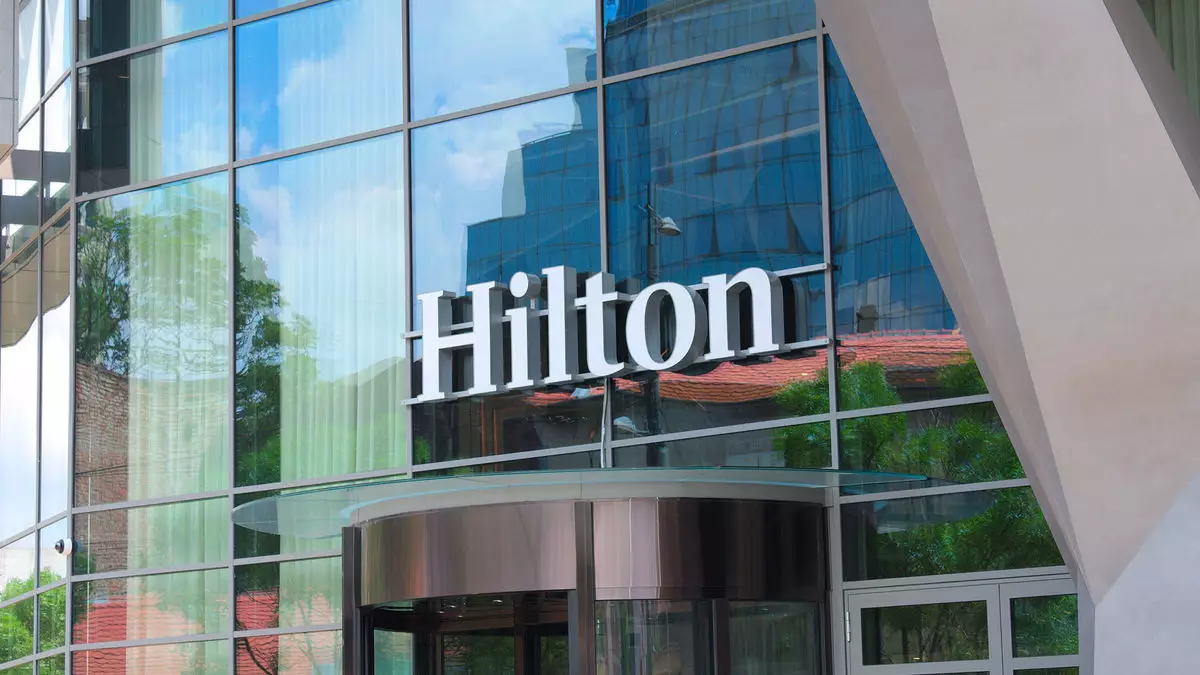Hilton’s latest earnings reveal a modest 0.5% decline in systemwide RevPAR for Q2 2025, signaling underlying vulnerabilities in the hotel industry. While the company managed to offset some softness through slight increases in average daily rates, the overall reduction points to a cautious consumer landscape. CEO Christopher Nassetta’s commentary attributes this downturn to a combination of “holiday and calendar shifts,” diminished government expenditures, weaker international inbound travel, and macroeconomic instability. These factors reflect not just cyclical shifts but deeper structural headwinds that could persist into the near future. A critical eye must question whether Hilton’s optimistic tone masks broader vulnerabilities or if their strategic positioning will withstand ongoing headwinds.
The slight dip in occupancy to 74.4% underscores a broader trend of restrained travel demand, especially in the U.S. market, which experienced a more pronounced 1.5% RevPAR decline. Meanwhile, international markets demonstrated surprising resilience, with some regions like Europe and the Middle East and Africa posting growth. This divergence hints at regional disparities, illustrating that global demand recovery remains uneven. By focusing primarily on the international rebound while highlighting U.S. challenges, Hilton’s narrative might be overemphasizing growth pockets that are unlikely to offset domestic difficulties fully.
Selective Strengths and Hidden Weaknesses
One of the few bright spots in Hilton’s report lies in the performance of its group business segment, which saw a significant 7.9% increase in management and franchise fees globally. In particular, group demand in U.S. urban markets remains robust, bolstered by corporate urban conferences and business events. CEO Nassetta’s assertion that “group is still raging” seems optimistic, but it risks glossing over potential vulnerabilities—such as overreliance on specific segments that may not be sustainable long-term. While transient business and group demand show promise, the overall leisure segment is described as “normalizing,” indicating a retreat from elevated levels experienced during post-pandemic excess. This normalization suggests that the industry is transitioning into a more sustainable, yet less euphoric, phase—something investors and stakeholders must scrutinize carefully.
Looking ahead, Hilton’s projected 0-2% RevPAR growth for the rest of 2025 reveals a cautiously optimistic stance. However, relying on holiday seasons and economic reopening as growth catalysts may be overly optimistic. The anticipation of a pick-up in business travel after Labor Day assumes a steady macroeconomic environment, which remains uncertain amidst ongoing inflation, geopolitical tensions, and fluctuating government policies.
Financial Performance: A Test of Resilience or Just Marginal Gains?
Despite a challenging top-line narrative, Hilton’s financials show resilience—total revenue up 6.3% year-over-year and adjusted EBITDA rising to $1.01 billion. CEO Nassetta confidently points to the power of Hilton’s “resilient business model,” but this optimism warrants scrutiny. The increased profitability amid declining occupancy and RevPAR suggests that Hilton might be leveraging cost efficiencies or high-margin franchise management fees to mask weaker core demand. While such strategies can provide short-term relief, they don’t address the underlying demand slowdown that could impact future revenue streams.
Furthermore, the emphasis on franchise and management fees highlights a shift toward asset-light growth, which is generally favorable in hedging operational risks. However, this approach raises questions about Hilton’s ability to sustain growth if demand continues to soften globally. Are they placing too much faith in segmented recovery and international markets? Or is their goal merely to hold steady until more favorable conditions emerge? Critical analysis suggests that Hilton’s strategies, while effective for now, might be insufficient to navigate prolonged market uncertainties without significant adaptation.
Hilton’s latest report paints a picture of a company employing strategic resilience amidst an uncertain environment. Still, beneath the surface lies a mixture of cautious optimism and underlying fragility. The industry’s future remains at a delicate crossroads—dependent on macroeconomic stability, regional recovery dynamics, and consumer confidence—areas where Hilton must remain vigilant rather than complacent.


Leave a Reply